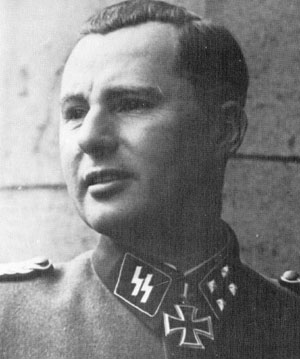
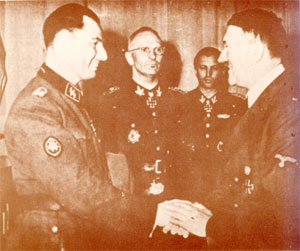


Leon Degrelle

The main entrance of the barracks of the regiment Leibstandarte SS "Adolf Hitler" in Lichterfeld-West, Berlin. It was previously the main academy for military cadets.
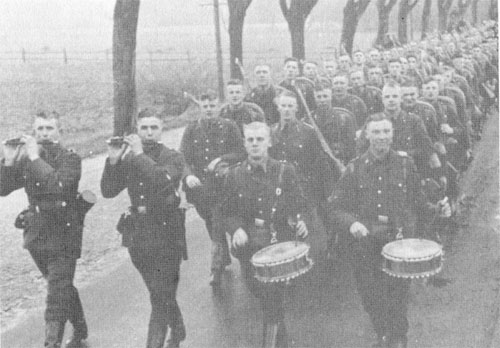
The 1st Company of the regiment "Germania" marching to the training grounds of Munster-Lager in 1937.

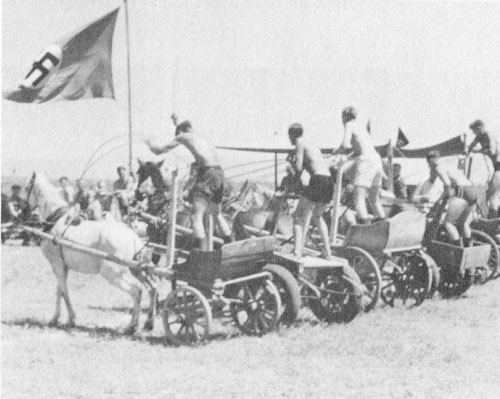
Every soldier had to become a light athlete. He had to run like lightning, be a high- and long jumper, throw a long way and be able to march swiftly and tirelessly. (General Steiner in "The Outlaw Army")
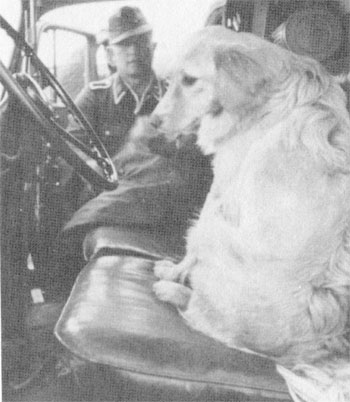

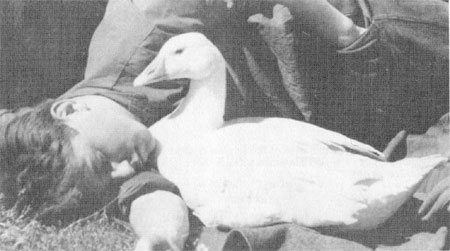
Always a close bond between Waffen SS men and animals.
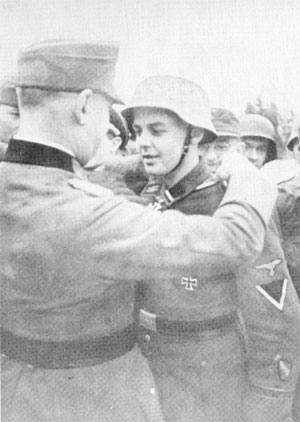
19 year-old private Mooyman of the Legion Nederland destroyed 13 Soviet tanks in a single day. The division commander honors him with the Knight's Cross (Ritterkreuz).
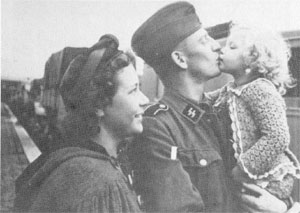
A sweet farewell for a long time.
A Leibstandarte company celebrates in Ukraine.
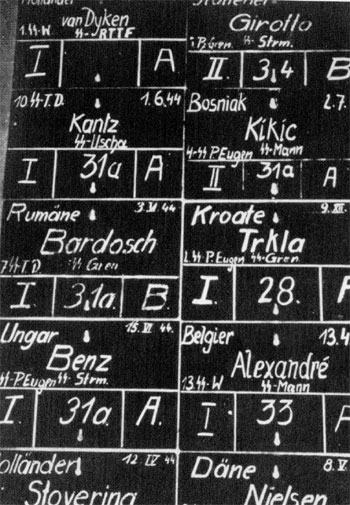
The "visiting card" in the "Europe" sick bay. Volunteers, dedicated fighters came from every European country. They came to fight bolshevism and were often brought together because of their injuries.
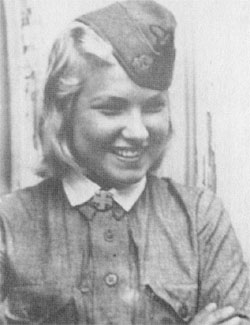
A Finnish "Lotta" (trans. note: like WAC) wearing an SS service cap.
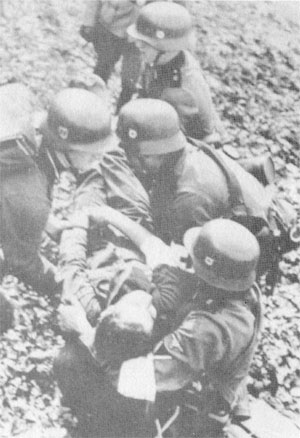
A casualty from the Leibstandarte is brought to safety.
.
French SS volunteers leave for the front
.. and honored their fathers of the First World War.
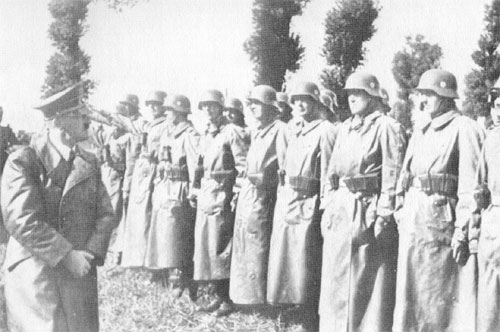
Recognition of their achievement by Adolf Hitler after The 18 Day Campaign.
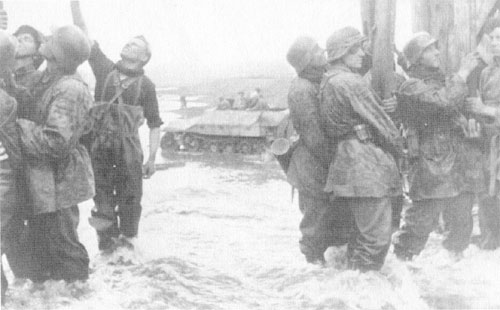
Engineers erecting supports during the construction of a bridge and transporting troops across a river by towing them on a ferry.

Knights bearing no ill will.
Flemish volunteers under the Yellow Lion standard.
Volunteers from Bosnia and Herzegovina.
French Waffen SS volunteers.
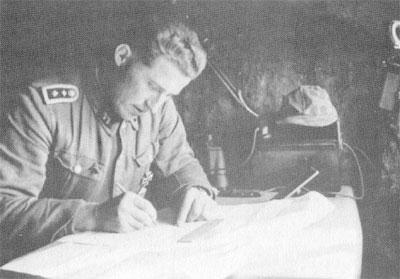
On the battlefront reports, sketches, artillery fire plans--all paperwork has to be done deep in a dugout by minimal light.
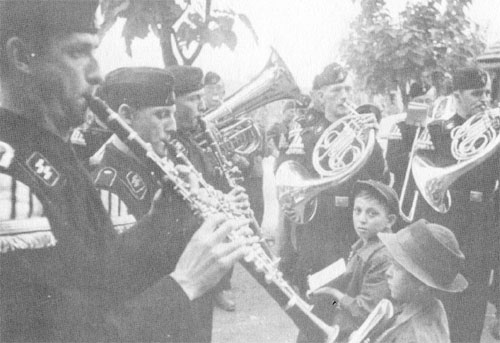
When there is no threat in the environment, the men can enjoy and entertain their friends with open-air concerts.
The "Florian Geyer" Cavalry Division using anti-tank "Teller" mines against the Russian T34 tanks.

The troops found that their most formidable enemy on the eastern front was "General Mud."
The winter of 1941 was the worst in years with temperatures down to 40° Fahrenheit.
No more advancing—survival is all that matters.
Everything must be cleaned—to get rid of lice.
Survey batteries of the Artillery, fix the strength and direction of the wind by following balloons with their measuring equipment.
A short break in the battle, then on they go.

Croatians in the mountains.
Volunteers from the Caucasus ready their mortar.
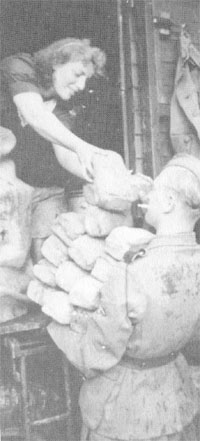
A loaf made of 750 grams of rye flour and called "Komiss" bread (Army bread), was the staple food and was made by the troops' own bakery companies.
Volunteers for Germany: Norwegians, Danes, Dutch, Flemings apply to join the Waffen SS.
The training school of the Waffen SS mountain troops in Neustift in the Stubai valley.